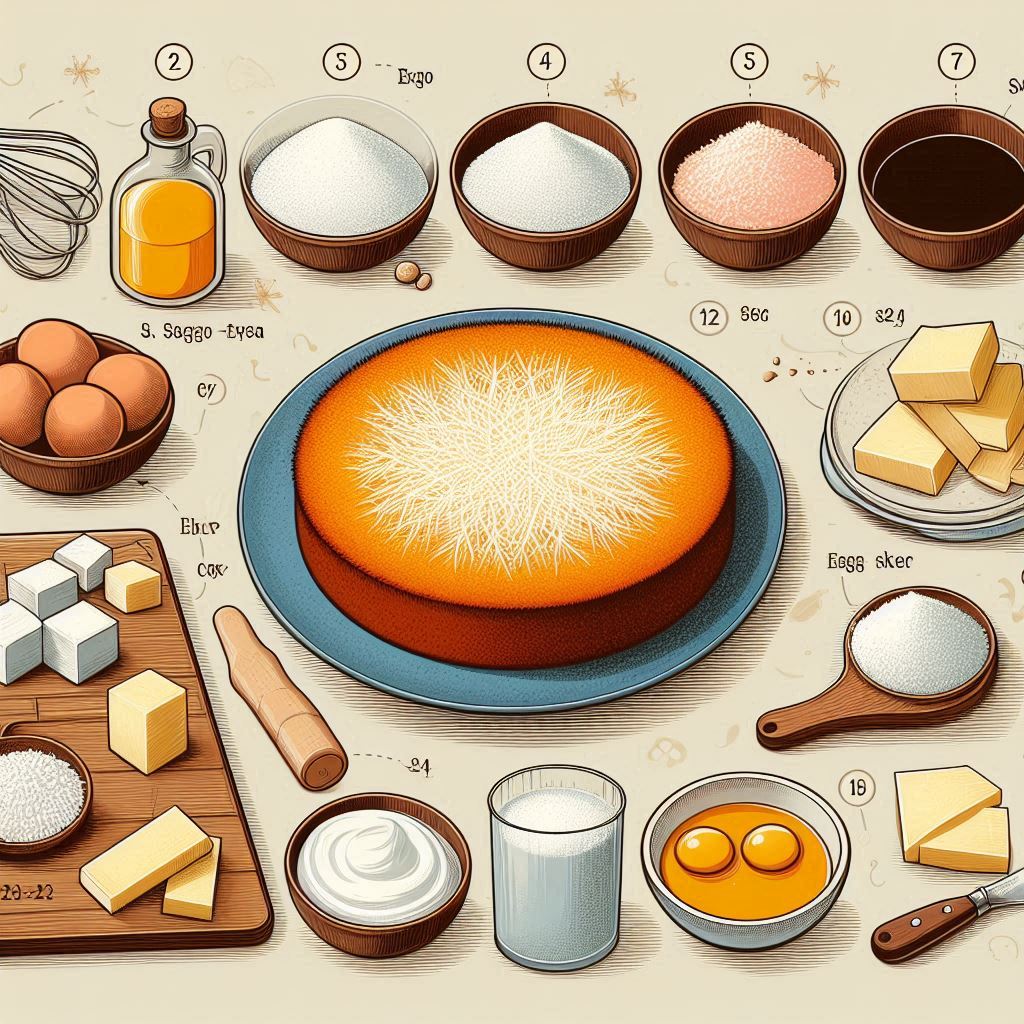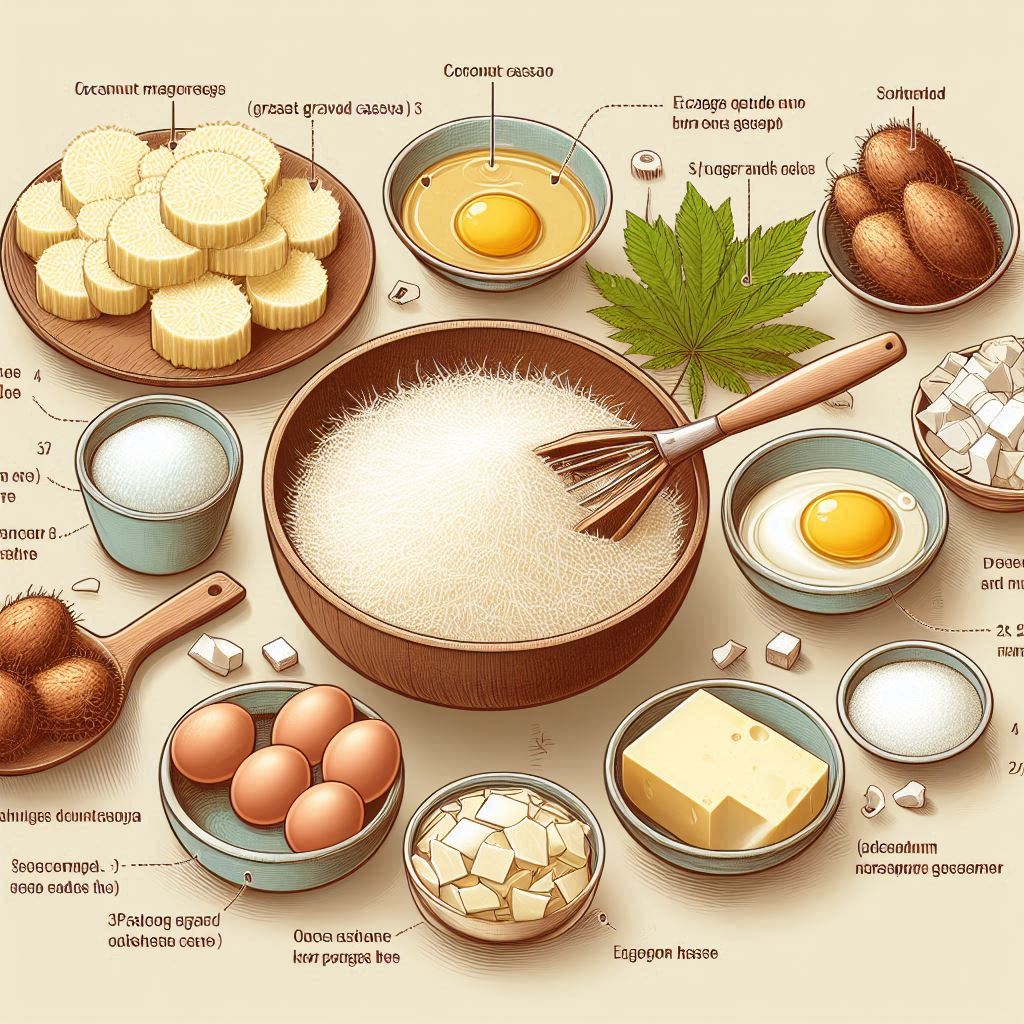Table of Contents
ToggleCassava Cake Recipe
The cassava cake is perhaps the most popular Filipino sweet, which has made people feel great inside and tasted the world over. This scrumptious and tacky treat is ready with ground cassava root, coconut milk, and a few different parts and has a particular taste and consistency that distinguishes it from different sweets. These are the narratives, fixings, and strategies for the most proficient method to make the best cassava cake, as per the recipe guide in this article. This cassava cake recipe will help both an expert pastry specialist and some other intrigued food darling who needs to plan a delectable cassava cake at home.

A short history of making cassava cake
Permit me to clear up for you the historical backdrop of this heavenly cassava cake before happening and how to set up the cassava cake recipe. Cassava, or yuca, manioc, and custard, is the third-biggest staple food crop in South America. It was first brought to the Philippines during Spanish rule and adjusted effectively as a harvest due to its solidity and a few purposes. From it, Filipino cooks over the years have concocted a few recipes, of which the cassava cake is exceptionally well known today.
Considering that cassava cake is a recipe that has been passed down through the ages, each family has its approach to setting up this cake with the above-expressed essential fixings. These days, cassava cake isn’t just viewed as a piece of Filipino dessert; it has likewise acquired prevalence in other. countries due to its taste and form.
Ingredients for cassava cake recipe
- 4 cups of grated cassava
- 2 cups of coconut milk
- 1 can (14 oz) of condensed milk
- 1 cup granulated sugar
- I also needed 1/2 cup of unsalted melted butter for the topping and the mixture for the filling.
- 4 large eggs
- 1 teaspoon of vanilla extract
- 1/4 teaspoon salt
For the topping:
- 1 cup of coconut milk
- 1/2 cup condensed milk
- 1/4 cup granulated sugar
- 1 egg yolk
- 1 tablespoon of cornstarch
Our ingredients are now set; let us now go to the step-by-step cassava cake recipe.

Step-by-Step Cassava Cake Recipe
Prepare the baking dish.
You, most importantly, need to turn on your broiler to preheat it to 350°F or 175°C. Preheat the stove to 350 degrees F. Delicately oil a 9×13-inch baking skillet with margarine, or you can fix it with material paper. This will keep your cassava cake from adhering to the container after cooking.
Prepare the cassava cake hitter.
In one bowl, place the ground cassava with the coconut milk, consolidated milk, sugar, margarine, eggs, vanilla, and salt. Mix until all the dry and wet, smooth, and even fixings are all around. This step is significant for giving the right consistency once you are making your cassava cake.
Pour and heat.
Move the cassava cake hitter to the pre-arranged baking container uniformly. Put the container on the cold stove and heat for roughly 45–50 minutes in preheated vegetable oil, up to the time that the surface becomes brilliant brown, and assuming one embeds a toothpick in the middle, it will confess all.
Prepare the garnish.
At the point when the cassava cake is baking, continue with making the garnish. To make the filling, blend coconut milk, consolidated milk, sugar, vanilla, egg yolk, and cornstarch in a pan. Mix it oftentimes over medium intensity, carry it to a stew, and cook until it begins to thicken. This generally requires around 5-7 minutes, contingent upon the quantity of inquiries that the educator can cover in the class.
Add the garnish.
After the cassava cake has been prepared to the end, remove the cake from the stove and pour the garnish combination over the cake, then, at that point, level it. Place the cake once again on the stove and sear for 3-5 minutes, or until the highest point of the cake becomes marginally brown with a portion of the cheddar liquefied and frothy. While setting it up, guarantee that you are exceptionally cautious not to consume it.
Cool and Serve
Allow the cassava to cool for quite a while before cutting it into the ideal shapes, be they square or rectangular. Such cooling is basic for the cake to finish its setting, which is its brand-name surface, which is chewy.
Tips on baking cassava cake to empower you to set up the best cake.
To guarantee your cassava cake recipe turns out entirely without fail, think about these supportive tips:
Fresh versus Frozen Cassava:
In a perfect world, new cassava ought to be utilized, yet frozen ground cassava can likewise be utilized in this recipe. Assuming that frozen cassava is to be utilized, it ought to be appropriately defrosted and the water pressed out.
Grating Procedure:
On the off chance that you are utilizing new cassava, mix it into glue because coarse glue is utilized in a cassava cake. It will help if you utilize a food processor to make the cutting more straightforward and guarantee that it is finished on each dish consistently.
Coconut Milk Quality:
To try not to think twice about the flavor of the coconut milk, one ought to utilize great-quality coconut milk. If you are able, set up your coconut milk by crushing new coconut meat with water and then sieving it.
Sweetness Level:
You can increase or decrease the amount of sugar to your taste. While some go for cassava cake that is not so sweet, some like it sweet and rich.
Texture Variations:
This is extra moveable or voluntary, as the cassava cake can be made firm by adding 1/4 cup all-purpose to the mixture. This will cause the density of the milk to increase, and hence it will be slightly thicker than the first category.
Flavor Enhancements:
Some people prefer to add shredded coconut, cheese, or ube (purple yam) to their cassava cake mixture to make the cake’s flavors more interesting.
Serving and Storing Your Cassava Cake
It is advisable to consume cassava cake in its near-stored condition or slightly reheated if it has already been cooled. It goes very well with a cup of hot coffee or tea, so it is perfect to have it mid-afternoon or as a dessert. To store your cassava cake, wrap it tightly with plastic or transfer the cake to a proper storage container.
Health Benefits of Cassava
Cassava cake is generally sweet, although it must also be pointed out that cassava has nutritional value. Complex carbohydrates can be attained from cassava, and they help provide energy for a longer time.
The following are acknowledgments of cassava cake in different parts of the globe:
Nonetheless, using cassava, one can prepare similar sweeteners in many parts of the world confectionery, as in the recipe presented below, which refers to Filipino cuisine. For instance, in Indonesia, there is something referred to as kue singkong that comes close to cassava cake. In Brazil, for instance, “bolo de mandioca” is a baked cassava cake. All these global variations demonstrate how cassava is incorporated into sweet items across cultures and regions.
Conclusions about Cassava Cake Recipe
To some, it is a dessert, but to Filipino food enthusiasts, it is creativity at its finest with a root vegetable called cassava. This cassava cake recipe is a sure winner with your family and friends: soft, sweet, and rich—you wouldn’t want to stop at one slice. By reading this detailed guide and applying the tips mentioned in this article, one will be on the right track to making the best cassava cake.

FAQs
Is cassava cake a strong dessert?
Cassava cake, although it has nutrients from cassava and coconut milk, has a high sugar and calorie comfortable. As with all foods that are high in fat and cholesterol, they should be consumed in reasonable portions and moderation.
Can I decrease the amount of sugar in this cassava cake?
Of course, it is possible to decrease the amount of sugar depending on the preferences of the consumer and their palate. Though we do this, it may reduce the texture and browning of the cake depending on other factors, like the heat source.


